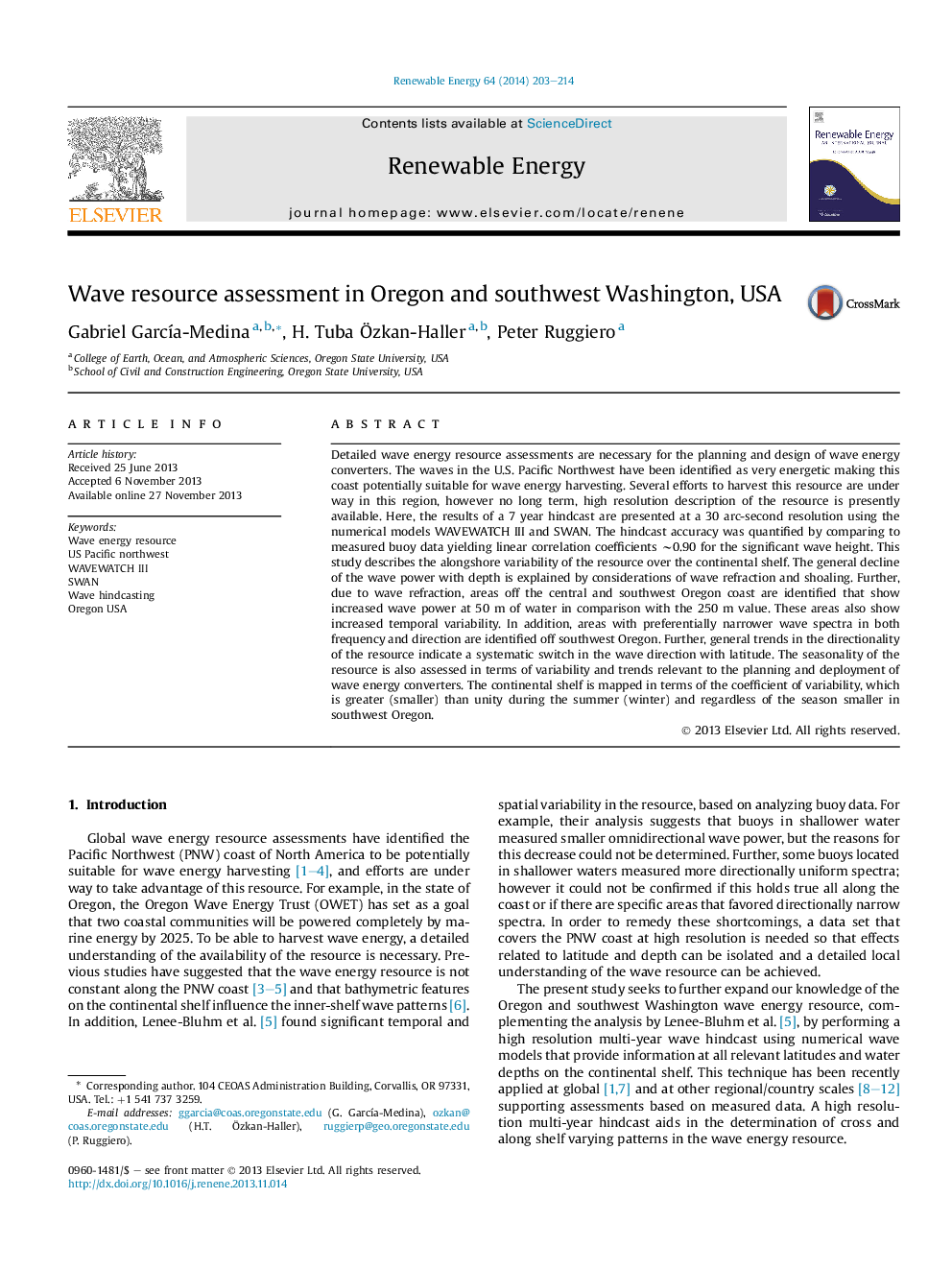| Article ID | Journal | Published Year | Pages | File Type |
|---|---|---|---|---|
| 300091 | Renewable Energy | 2014 | 12 Pages |
•We perform a 7-year wave hindcast to assess the wave energy resource in the US PNW.•The wave energy patterns and variability are mapped for the US PNW shelf.•Areas of amplified wave energy and spectrally narrow waves are identified.
Detailed wave energy resource assessments are necessary for the planning and design of wave energy converters. The waves in the U.S. Pacific Northwest have been identified as very energetic making this coast potentially suitable for wave energy harvesting. Several efforts to harvest this resource are under way in this region, however no long term, high resolution description of the resource is presently available. Here, the results of a 7 year hindcast are presented at a 30 arc-second resolution using the numerical models WAVEWATCH III and SWAN. The hindcast accuracy was quantified by comparing to measured buoy data yielding linear correlation coefficients ∼0.90 for the significant wave height. This study describes the alongshore variability of the resource over the continental shelf. The general decline of the wave power with depth is explained by considerations of wave refraction and shoaling. Further, due to wave refraction, areas off the central and southwest Oregon coast are identified that show increased wave power at 50 m of water in comparison with the 250 m value. These areas also show increased temporal variability. In addition, areas with preferentially narrower wave spectra in both frequency and direction are identified off southwest Oregon. Further, general trends in the directionality of the resource indicate a systematic switch in the wave direction with latitude. The seasonality of the resource is also assessed in terms of variability and trends relevant to the planning and deployment of wave energy converters. The continental shelf is mapped in terms of the coefficient of variability, which is greater (smaller) than unity during the summer (winter) and regardless of the season smaller in southwest Oregon.
